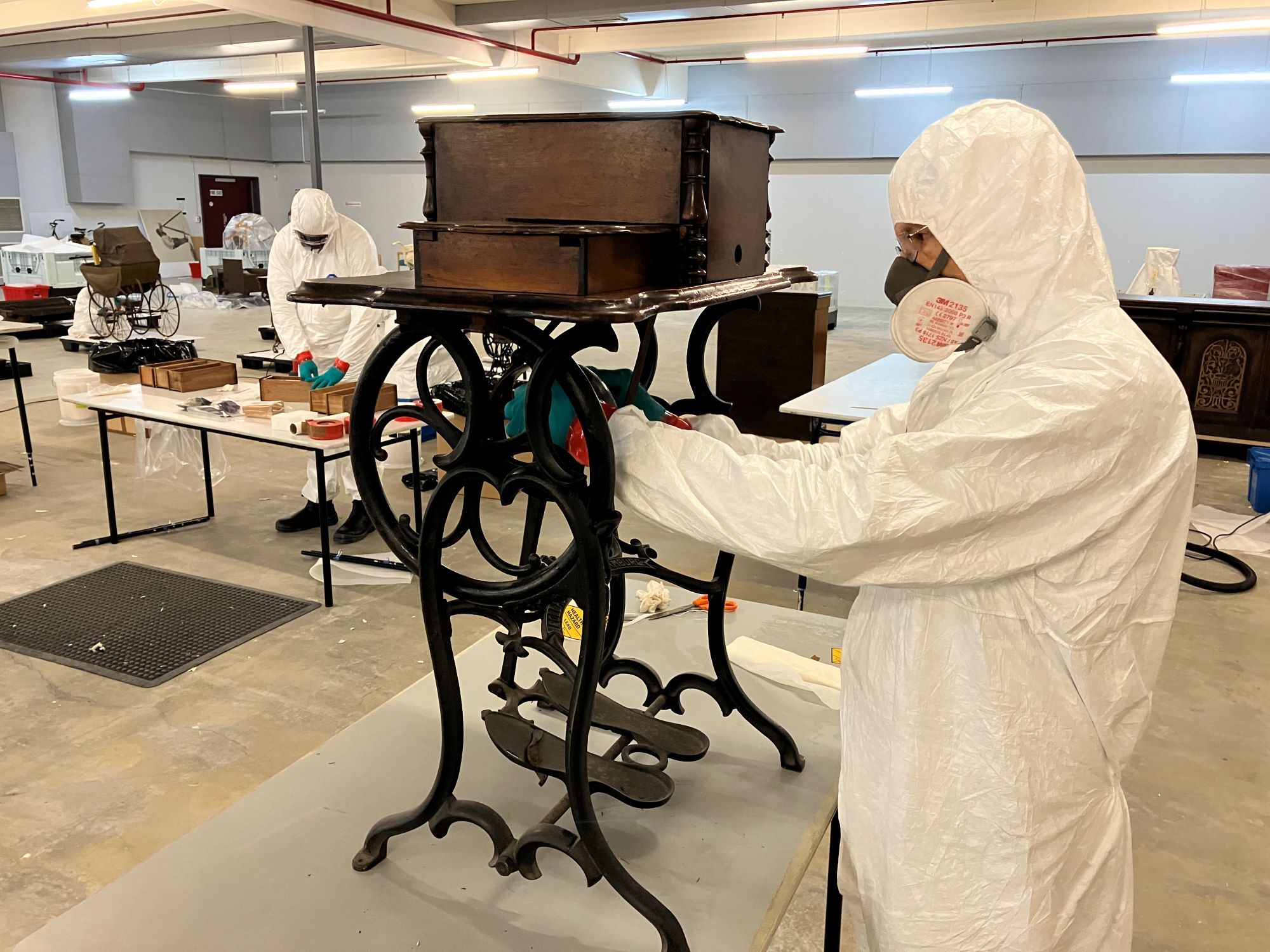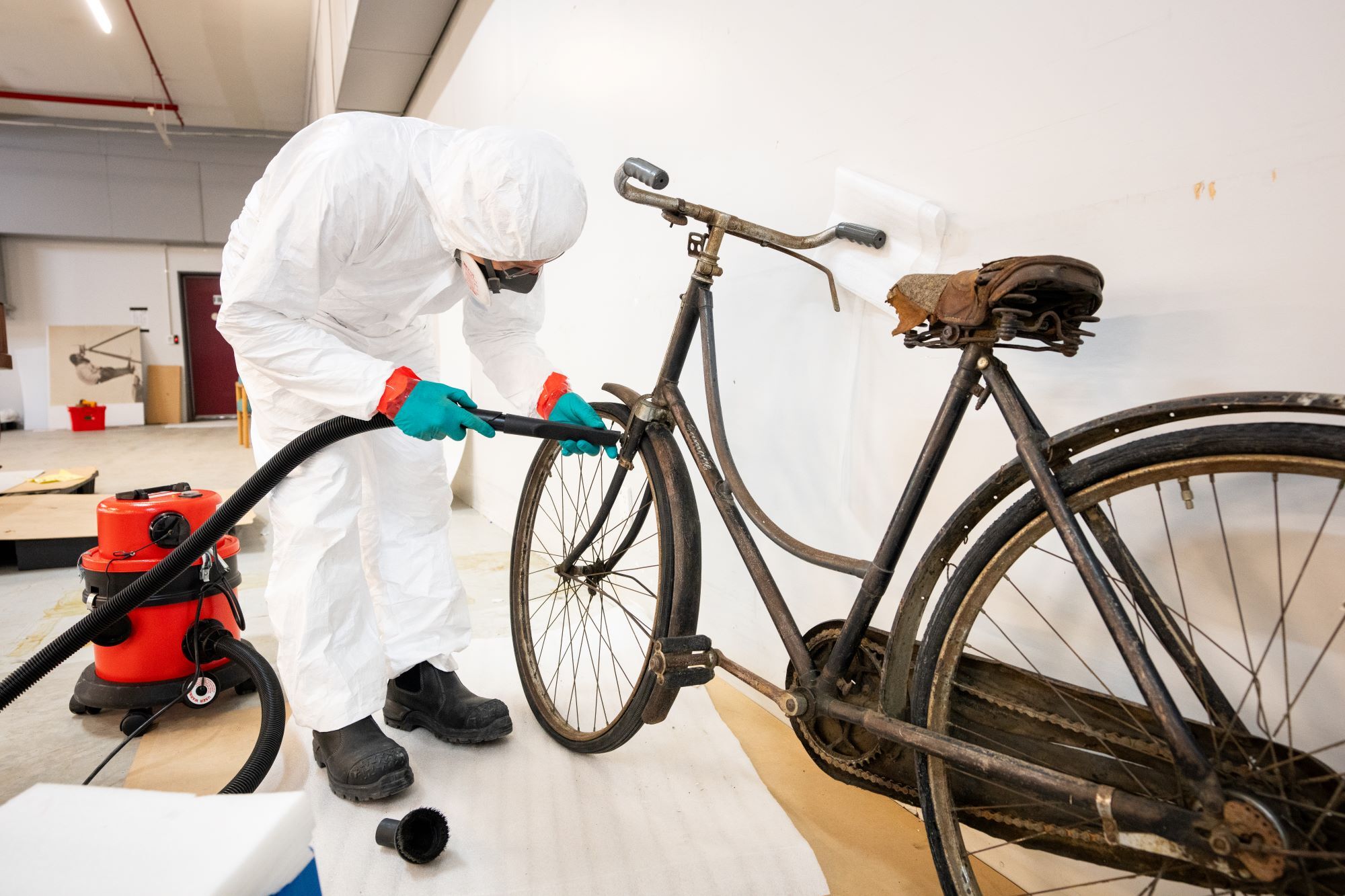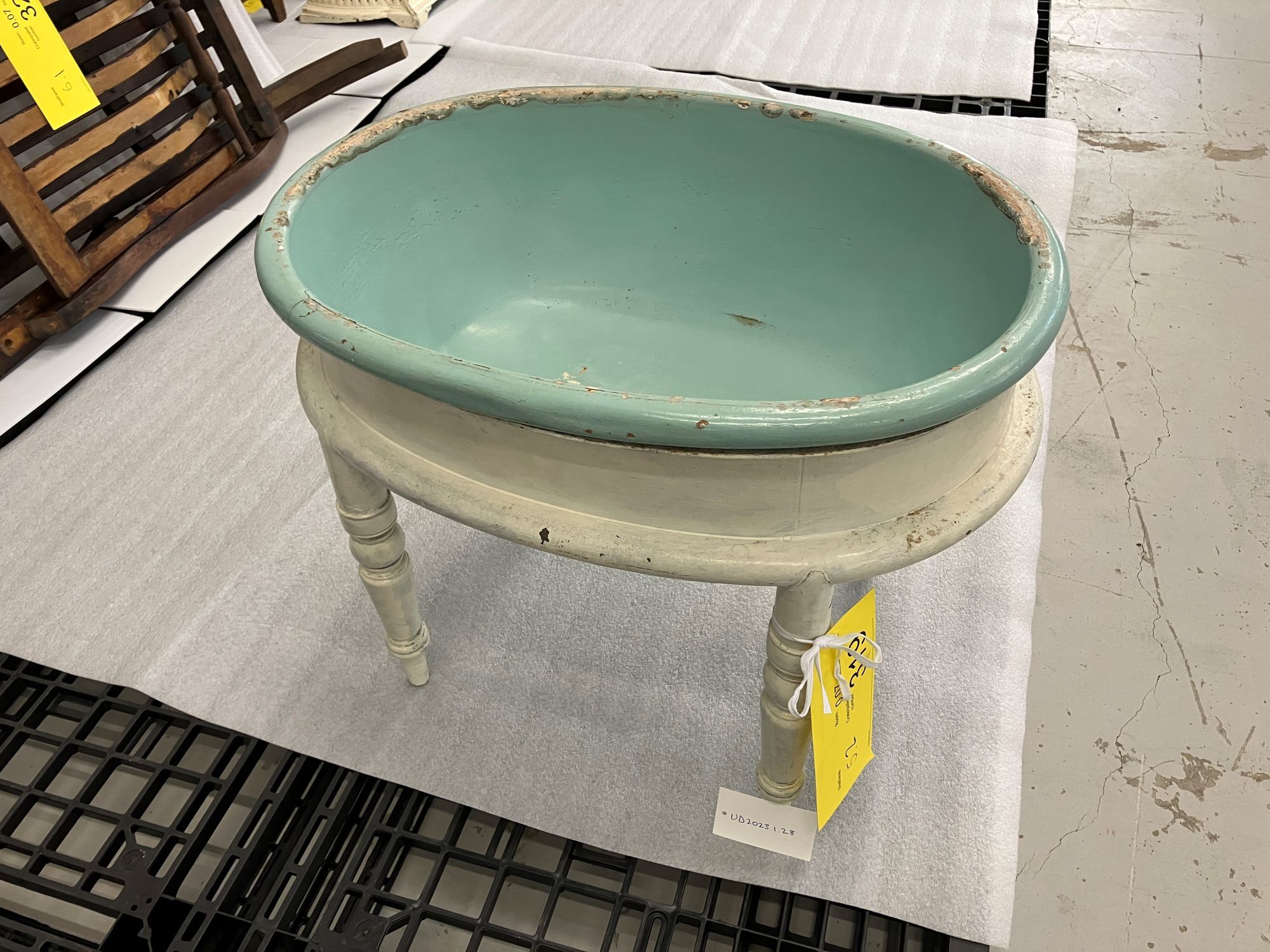By Phil Skewes, Associate Curator Collections Inventory.
One of the major reasons behind the Museum redevelopment was the inadequate collection storage facilities at the Rolleston Avenue site.

Due to the age and nature of historic additions to the Museum building complex, effectively managing the temperature, humidity and pests in the storerooms was a daily struggle for staff.
On top of that, many of the objects that we care for are themselves challenging and need to be handled with great care. Arsenic was historically used in taxidermy and to make green dye for book covers and Victorian costumes. Mercury was used in clocks, barometers and thermometers, ethanol for preserving natural history specimens and lead in paint.
Museum staff are very aware of the risks and always wear gloves, masks and coverings for their clothes when handling these objects.
In early 2023, as we were emptying the building we found some other worrying issues in our storerooms and back of house areas that were not so apparent.
Before we removed the taxidermied elephant from what was known by staff as the Mammal Attic, in the roof space of the 1882 building, we carried out baseline testing for contaminants in the space. This revealed traces of lead on the floor and rafters of this heritage building space.
The Museum took a cautious approach. Staff who had been in the attic in the previous 6 months were offered blood tests, which showed lead levels that were consistent with general community blood levels of this common environmental contaminant.
We engaged with Worksafe throughout the process and, as a precaution, took samples from other objects that had been stored in the attic and other storerooms. Objects stored in the Museum basement returned similar elevated lead readings.
The source was likely from the historic use of lead in building materials, such as roof flashing and paint. Because exposure to lead can cause health problems, the Museum decided the objects would be decontaminated.

Over 3 months, Museum staff cleaned about 750 large objects and hundreds of boxes containing smaller objects. We used paper towels soaked in a cleaning agent specifically made for removing metal contaminants from surfaces. For objects made of textiles and rough metal we used a specialised vacuum cleaner to capture the tiny particles of lead dust.
Staff wore hooded lab suits, synthetic rubber gloves, respirators and cleanable safety boots to keep safe during the cleaning work. Some of the group took regular blood tests to monitor their lead levels which showed no elevation over the course of the clean-up project. Air testing showed lead levels similar to everyday living conditions.
To monitor the effectiveness of the cleaning, the Museum purchased a portable X-ray fluorescence (pXRF) scanner. This was an invaluable tool, giving immediate results of surface lead levels before and after cleaning. It also revealed other elements. For example we got a very high iron reading from a wooden mantelpiece (an expected outcome from coal combustion).
The scanner will continue to be useful for quickly and easily identifying toxic elements in collection items, like arsenic in early taxidermy. It has already been used to identify the presence of arsenic in historic books in the Museum collection. (See video above).
Lead was used in the manufacture of some products such as paint, petrol and plumbing components in the past (the term plumbing is derived from the Latin word for lead, plumbum, due to its common use in the industry). Lead use in Aotearoa was phased out over the last half of the twentieth century due to its toxicity.
Most of the objects in the Museum storerooms affected by the dust were made in the eighteenth and first half of the nineteenth centuries, so we expected that lead would still be detected in some objects even after cleaning. While the levels of lead in these objects pose a very low risk, it was important to identify what sort of items were involved.

Some objects were coated in lead paint which was banned from use in Aotearoa in the late 1970s. An innocuous-looking wooden bedroom suite was painted in dark green lead paint. A baby’s bath was also decorated with lead paint – a particularly unfortunate use of the toxic element. A few furniture items that looked like natural timber had low levels, indicating that varnish or stains containing lead had likely been used to treat the wood.
This clean up project thankfully showed that the risk from the contaminated dust was low. It means that staff and anyone from the community accessing these taonga (treasures) can have confidence around the safe handling of these items in the future.
A major benefit of the Museum redevelopment is new and modern storage facilities and the assurance that the collection will have an unleaded future.





